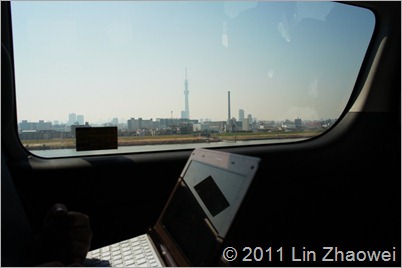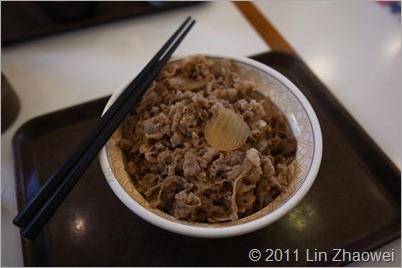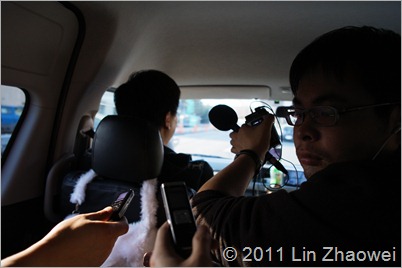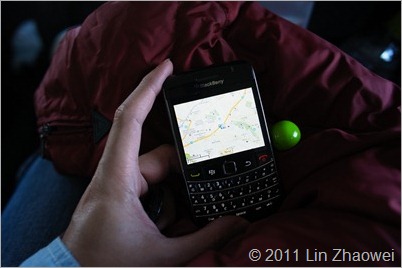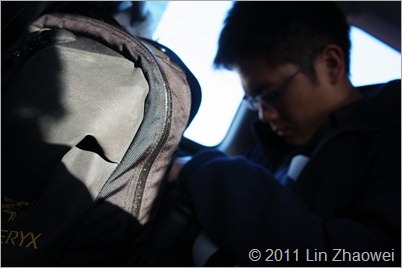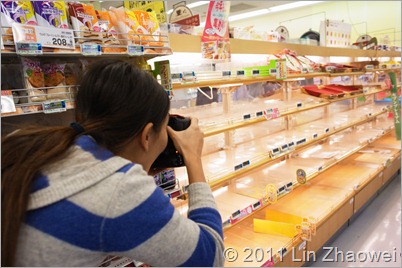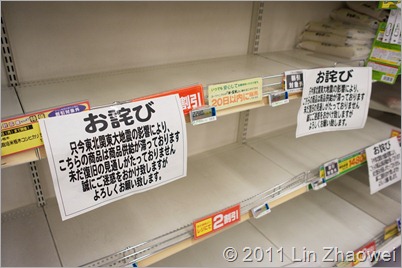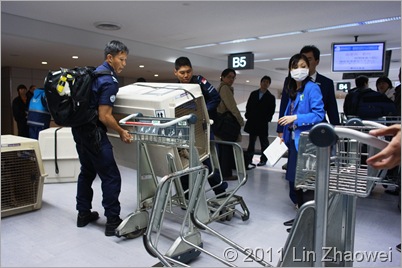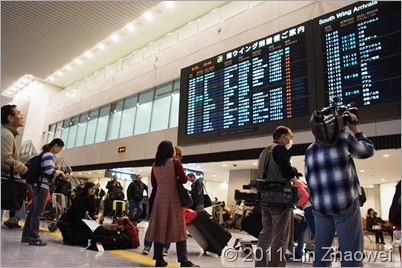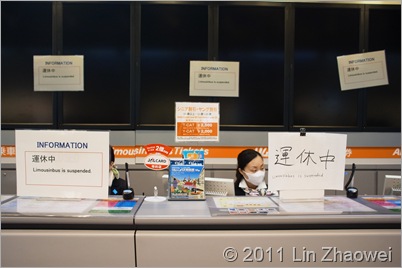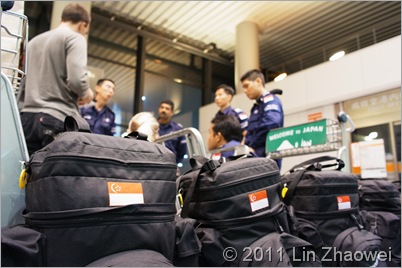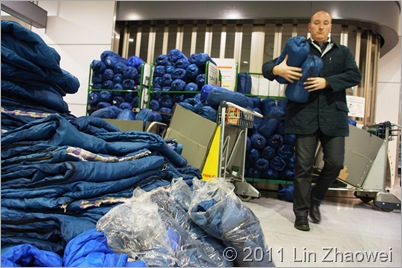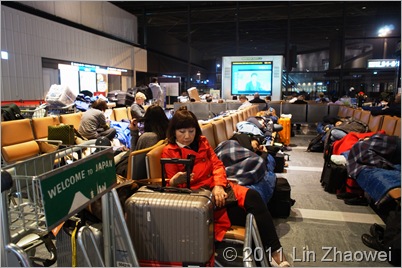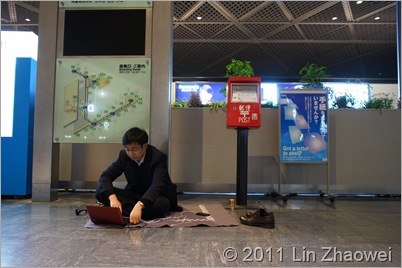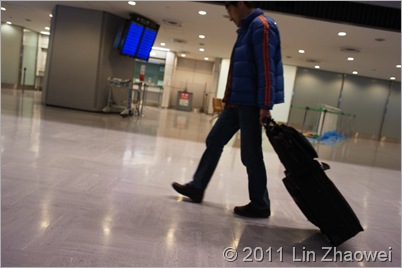March 14. Our first and last day in Sendai. As mentioned in the previous post, we visited a few places near Sendai city, and caught a glimpse of the devastation. But it was evening before we knew it and it was time to head back to the city centre.
Just outside the City Office, however, we spotted a makeshift stall on the pavement selling miso soup and onigiri (rice balls). Instinctively, we quickly parked the van nearby, and queued up for our first warm meal for a day. They charged just 300 yen for a bowl of soup with two onigiri – quite a bargain in my opinion, given the scale of the disaster just tens of kilometres away. The miso soup was so gratifying that I had a second helping. The onigiri could be kept in my pocket for later, after all.
Then came the time to make the key decision of the trip.
Our drivers had been recalled by their bosses because of radiation fears. An explosion happened at the Fukushima No. 1 nuclear plant that afternoon, and it was the third in as many days. We tried to offer them more money, but they insisted this was not a matter of money – we could either go with them, or stay in Sendai and find our own way about.
I would be lying if I said I was fearless of the radiation threat. The possibility of over exposure to radiation was real, and undetectable. The night before I left for Japan, I monitored the news until about 1am in the office, and the last I read, the nuclear situation was fully under control. The next day (March 12), after I landed in Tokyo, I heard news of the first explosion. Then came the next two. Tepco, the company that runs the plant, did not seem to be in control of the situation at all.
But at the same time, we didn’t have anything substantial to show for the trip so far.
In the end, we decided – as a team – to go back to Tokyo.
It was past 2am, March 15 by the time we got to a hotel that had rooms. A quick trip to the convenience store to get some food and water. Never been so glad to enter one, really. Till that day, visiting a convenience store (or Combini) in Japan, to me, was an essential experience, a daily habit for any resident or traveller to this wonderful country. But this time, it was like a step back into sanity, back into a reality I was used to.
Back at the hotel, I took a shower for the first time in three days. Then I spent a couple of hours reading up NHK and other Japanese news sites on the situation in Ibaraki prefecture – the only tsunami-struck prefecture we could go to on a day-trip from Tokyo. I had to make the Ibaraki trip worthwhile, and research was essential. Afraid that I could not wake up in time, I left the lights and TV on.
A couple of hours later, I was up. Ate some bread, and headed downstairs. Our driver was supposed to come at 9am, and he was a little late.
Our first stop was the petrol station. Given the widespread petrol shortages, we were only allowed to buy 2,000 yen’s worth of fuel. But our driver Guo was quick-thinking – when the attendant walked away, he topped up the van’s tank to the maximum, paid up through the machine and quickly drove off. I wasn’t sure how much fuel we actually needed for the day’s drive, but having a full tank was most assuring.
The highway was packed bumper-to-bumper, and after a 30min crawl we realised the reason – they had sealed off the way to Ibaraki for exclusive use by relief vehicles. Guo once again showed some quick-thinking and somehow convinced the officers manning the road block to let us through. I filled up some forms at a table set up on the empty highway, and we received a plate to display at our windscreen, that read 緊急, or emergency.
The trip had up till this point been quite a surreal experience for me, but the journey on the near-empty highway was perhaps the most surreal portion. While I was still gungho about the trip just the day before, my fear of the radiation had escalated to almost hysteria at that point of time. The empty road seemed to suggest we were heading to some sort of suicide mission. Only the banter among the four of us journos kept my tears back, I think. Looking back, the fear was irrational, but what would you feel if you were in my shoes?
Here’s a short clip I shot of the drive:
Our destination was Oarai (大洗), a coastal town near the prefecture capital Miho (水戸). Ibaraki, located more than 100km away from the epicentre, was spared the worst of the tsunami, but there were around 20 deaths. One person died in Oarai. Another city, further north, had over 10 fatalities but I was not confident of getting there given the time we had.
We stopped at a highway kiosk along the way, and I spoke to the people working there. They were indeed afraid of the radiation, but they admitted there was no where they could go anyway. Most of them live nearby.
We arrived at Oarai after 2pm. It was practically a ghost town. I had a lengthy chat with a friendly youth who cycled past me. He is a university student who was visiting his friends around town. He told me of how the 1999 Tokaimura nuclear incident affected him as a primary school kid. (The Tokai plant is about 20km away) The situation in Fukushima, which has invoked memories of that episode, was causing the Oarai residents much anxiety despite assurances from the government that they were too far away from Fukushima to be affected.
This was when I got a call from my boss. The editors have decided to pull us back. Immense relief. But our work was not done yet. We did more interviews at the town, talking to town officials, residents and volunteers. Soon it was dark, and the town folk had left for home. It was about 5pm, and we had to head back to Tokyo. It was well past 8pm by the time we got back to our hotel. We bid farewell to Guo – he was leaving for the safety of Osaka in western Japan with his girlfriend and colleagues that same evening.
The following evening, we flew back to Singapore. I was pleasantly surprised to meet a friend from SMU at Narita airport – she now works for the Ministry of Foreign Affairs and they had flown in to help stranded Singaporeans at the airport. I touched down at Changi at about 1am, March 17.
On hindsight, I would forever question my decision to turn back to Tokyo from Sendai. Because we effectively gave up any chance of landing the stories we were there to get. Such is the cruelty of life. You make a decision and live with whatever regrets it leads to.
It’s been a month since the trip, and my disappointment has somewhat waned. But the question will linger in my mind for a while yet. I will have to make amends to myself, somehow.
| |
 |
| Carrots, shoes and cans on the dusty roadside. |
| |
| |
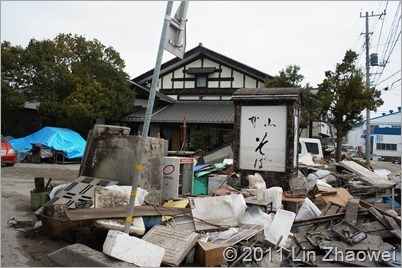 |
| A soba shop, now littered with junk. |
| |
| |
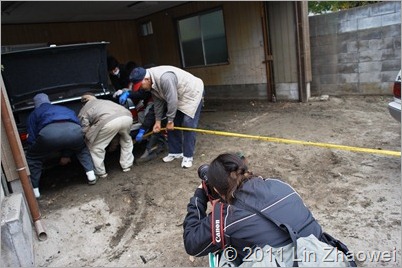 |
| Some workers helping to tow out a damaged vehicle from a garage. While the damaged from the tsunami was not too drastic in Oarai, the loss of property was still immense. |
| |
| |
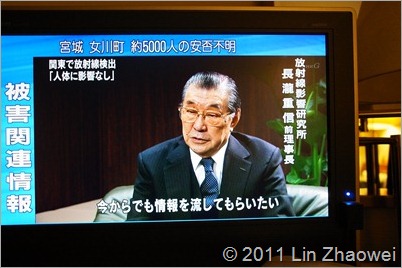 |
| Taken in my hotel room. Experts appeared on TV every day, giving their own take on the nuclear crisis and relief efforts. All the TV channels devoted their programming to the triple disasters during the time I was in Japan. |
| |
| |
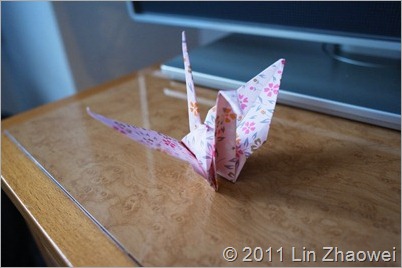 |
| At our hotel, but the room service staff would put paper cranes on our beds. It reminded me of the story of Sadako and her 1,000 cranes. May Japan emerge from this current nuclear disaster stronger than ever. |
| |
Part 1: It begun at Narita
Part 2: The long ride to Sendai
Part 3: Quiet night in Sendai
Part 4: A glimpse of the devastation
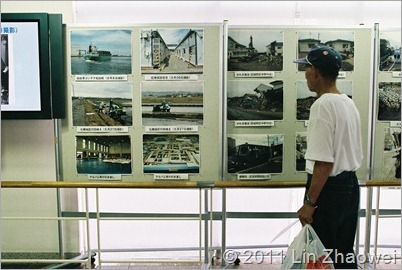
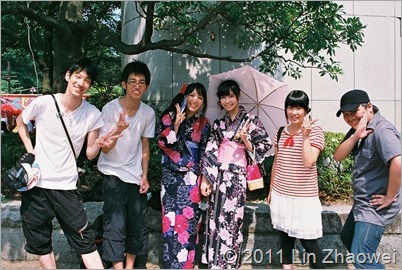
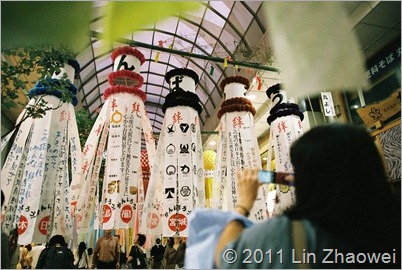
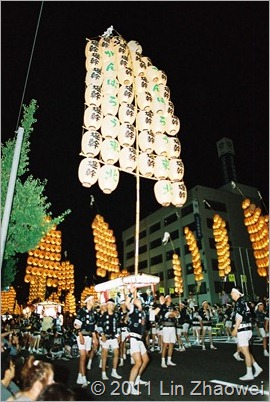
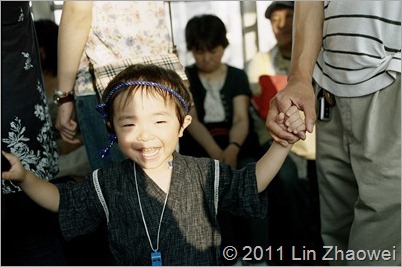

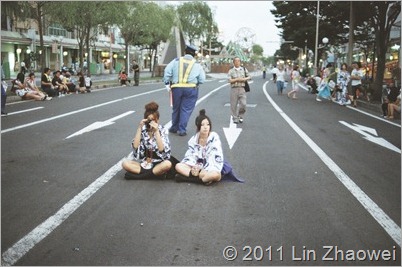
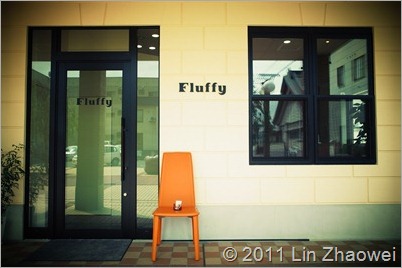
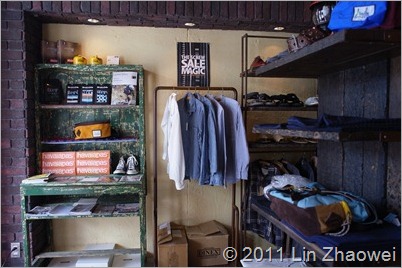
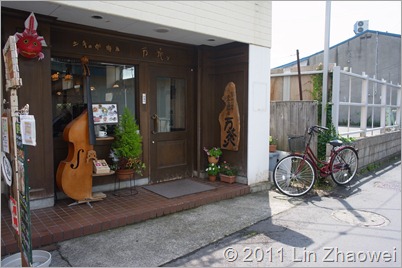
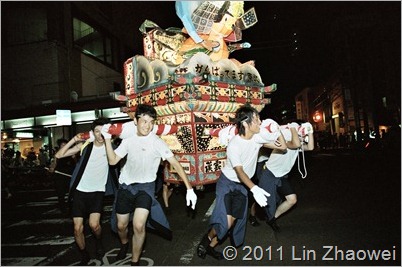

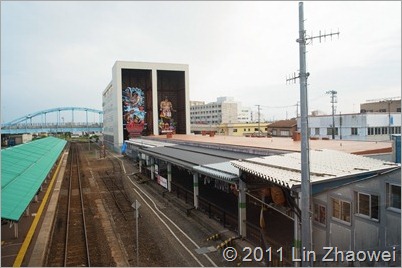
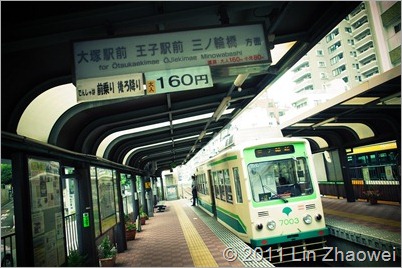



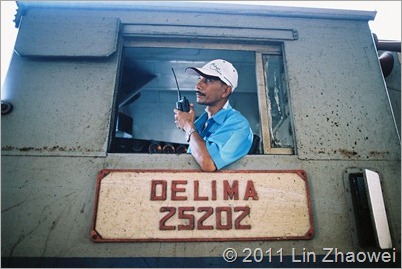
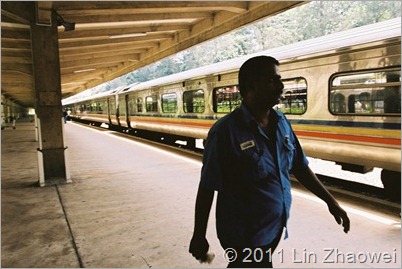
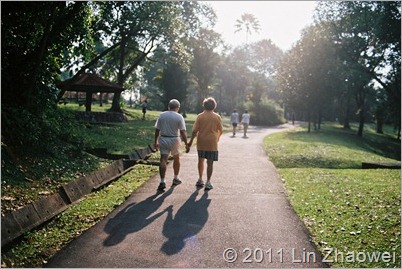
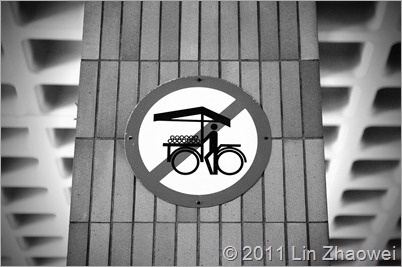

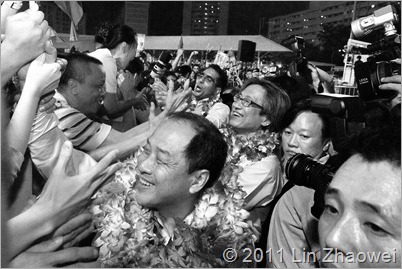
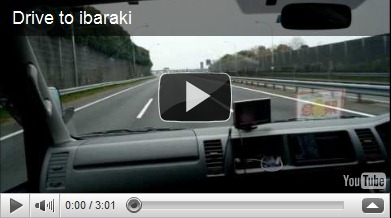





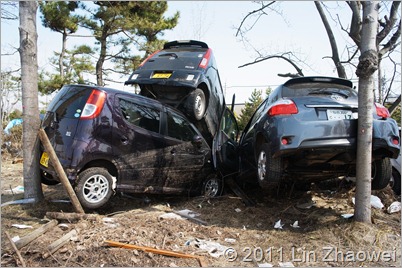
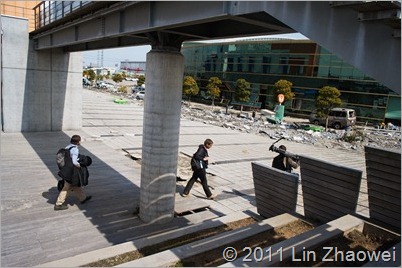
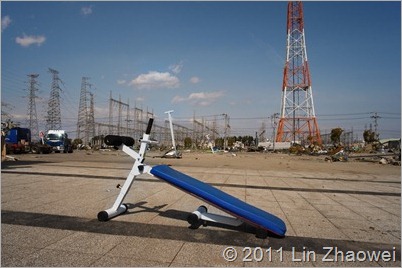
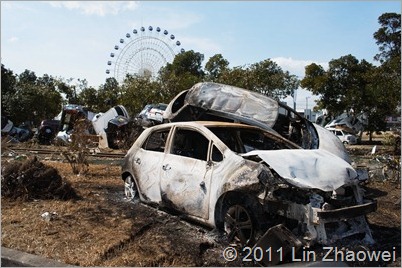

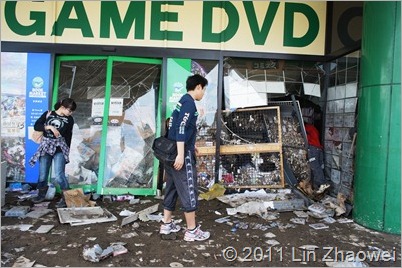
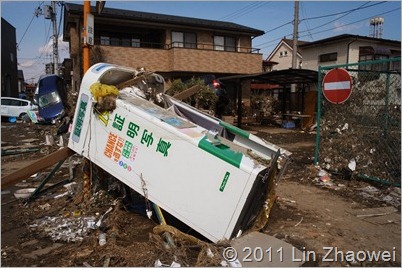
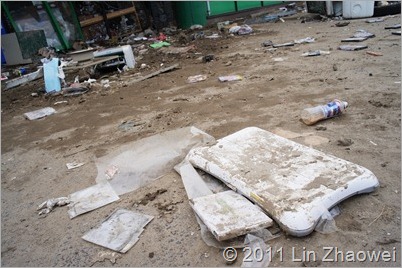

![R0015437[5] R0015437[5]](http://lh6.ggpht.com/_i-1SvZD8U3Q/TZSgqJhhTxI/AAAAAAAAAaQ/f55U6pdeb-4/R00154375_thumb.jpg?imgmax=800)
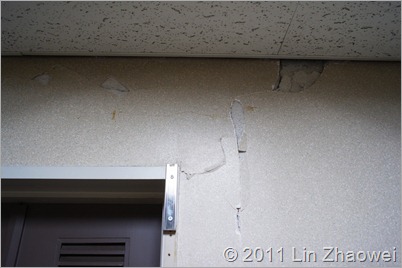
![R0015444[5] R0015444[5]](http://lh4.ggpht.com/_i-1SvZD8U3Q/TZSgtDkr6yI/AAAAAAAAAag/6VwnxOsoX-0/R00154445_thumb.jpg?imgmax=800)
![R0015446[5] R0015446[5]](http://lh4.ggpht.com/_i-1SvZD8U3Q/TZSguMwLqoI/AAAAAAAAAao/48fIy3hfvyA/R00154465_thumb.jpg?imgmax=800)
![R0015451[5] R0015451[5]](http://lh4.ggpht.com/_i-1SvZD8U3Q/TZSgvnUdofI/AAAAAAAAAaw/6YQAduF7xTA/R00154515_thumb.jpg?imgmax=800)
![R0015456[5] R0015456[5]](http://lh3.ggpht.com/_i-1SvZD8U3Q/TZSgxN4SxaI/AAAAAAAAAa4/PhYFTq_tgps/R00154565_thumb.jpg?imgmax=800)
![R0015458[5] R0015458[5]](http://lh6.ggpht.com/_i-1SvZD8U3Q/TZSgyerMEgI/AAAAAAAAAbA/RmTcHYm8uII/R00154585_thumb.jpg?imgmax=800)
